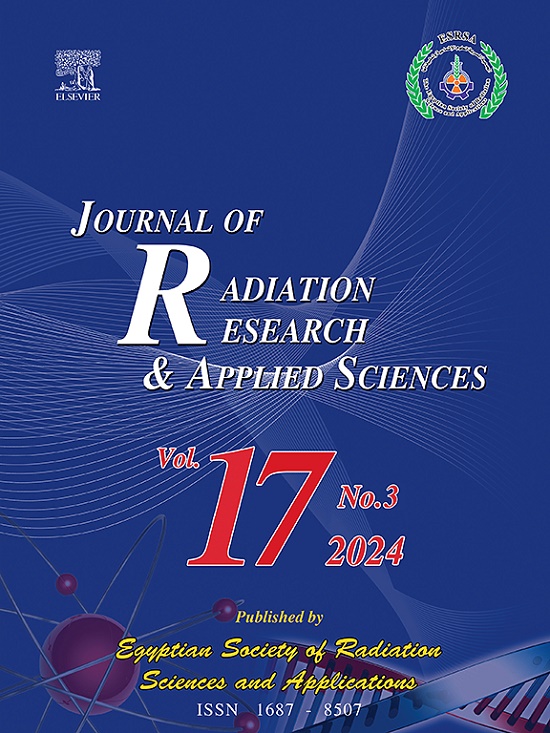电离放射治疗肿瘤的通用多靶点(GMHMT)放射生物学模型仿真器的设计
IF 2.5
4区 综合性期刊
Q2 MULTIDISCIPLINARY SCIENCES
Journal of Radiation Research and Applied Sciences
Pub Date : 2025-06-12
DOI:10.1016/j.jrras.2025.101680
引用次数: 0
摘要
放射治疗在癌症治疗中起着至关重要的作用,需要精确的放射生物学模型来预测肿瘤细胞的存活。传统的线性二次元(LQ)模型和Lea靶模型在高剂量环境下往往不适用。为了解决这一限制,我们提出了一个基于matlab的仿真工具,实现了通用多命中多目标(GMHMT)模型,该模型结合了多命中和多目标动力学以及一个否定参数,以解释修复机制和非靶向效应。该工具允许用户输入肿瘤特异性参数,包括细胞体积、靶标和命中数以及阴性因子,以模拟不同剂量下的生存分数。仿真结果与已发表的实验数据非常吻合,RMSE为0.1030,R2为0.9128。敏感性分析显示,剂量和肿瘤体积是影响生存率的主要因素,强调了该模型与个性化治疗计划的相关性。GMHMT模拟器提供了比经典模型更高的精度,并为放射生物学建模和治疗优化的临床和研究应用提供了一个用户友好的界面。本文章由计算机程序翻译,如有差异,请以英文原文为准。
Designing a simulator for Generalized multi-hit multi-target (GMHMT) radiobiological model in cancer treatment through ionizing radiation therapy
Radiation therapy plays a critical role in cancer treatment, necessitating accurate radiobiological models for predicting tumor cell survival. Traditional models such as the Linear-Quadratic (LQ) and Lea's target models are often inadequate in high-dose scenarios. To address this limitation, we present a MATLAB-based simulation tool implementing the Generalized Multi-Hit Multi-Target (GMHMT) model, which incorporates multi-hit and multi-target dynamics along with a negation parameter to account for repair mechanisms and non-targeted effects. This tool allows users to input tumor-specific parameters—including cell volume, number of targets and hits, and the negation factor—to simulate survival fractions under varying doses. Simulation results demonstrate strong alignment with published experimental data, achieving an RMSE of 0.1030 and an R2 value of 0.9128. Sensitivity analysis reveals that dose and tumor volume are primary influencers of survival fraction, underscoring the model's relevance for personalized treatment planning. The GMHMT simulator offers improved accuracy over classical models and provides a user-friendly interface for both clinical and research applications in radiobiological modeling and therapy optimization.
求助全文
通过发布文献求助,成功后即可免费获取论文全文。
去求助
来源期刊

Journal of Radiation Research and Applied Sciences
MULTIDISCIPLINARY SCIENCES-
自引率
5.90%
发文量
130
审稿时长
16 weeks
期刊介绍:
Journal of Radiation Research and Applied Sciences provides a high quality medium for the publication of substantial, original and scientific and technological papers on the development and applications of nuclear, radiation and isotopes in biology, medicine, drugs, biochemistry, microbiology, agriculture, entomology, food technology, chemistry, physics, solid states, engineering, environmental and applied sciences.
 求助内容:
求助内容: 应助结果提醒方式:
应助结果提醒方式:


